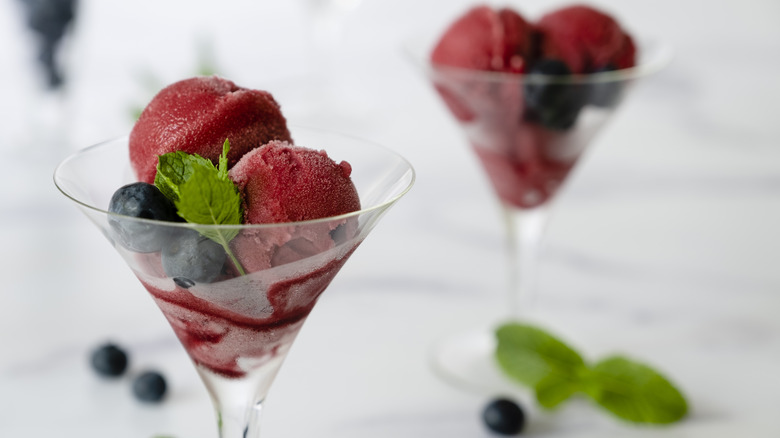The Unique Method Used To Make Italian Ice
Italian ice is a deliciously refreshing treat that has won hearts with its smooth texture and fruity flavors. But what goes into the making of Italian ice, and how does it achieve its signature smoothness? To understand this icy delight — and how it differs from other frozen treats like granita and shaved ice — you need to know what technique is used to make Italian ice.
The frozen dessert is made with simple ingredients including water, sugar, and fresh fruit or fruit juice. But it's the method of preparation, which involves whipping the mixture as it freezes, that gives Italian ice its smooth and velvety texture. The whipping process incorporates tiny air bubbles into the mix, similar to ice cream, preventing the formation of large ice crystals and ensuring the end product is silky rather than icy.
This technique is what separates Italian ice from its close cousin, granita. Granita has a more granular texture, achieved by freezing the mix solid, then scraping it with a fork to create flaky ice crystals. Both are delightful in their own ways, but for those who prefer a creamier, smoother treat, Italian ice is the winner.
How to ensure smooth Italian ice
If you are trying to make Italian ice at home, there are some tips to ensure a smooth — rather than gritty — icy dessert. If you're using fresh fruit rather than fruit juice, find the freshest fruits you can find, as the flavor of your Italian ice depends largely on the fruit used. Puree the fruits to extract their flavor. Next, dissolve the sugar in a bit of warm water before adding it to the fruit puree. This ensures even distribution and prevents a grainy texture.
Consistent churning is key to achieving the desired creamy texture. Use an electric ice cream maker and follow the manufacturer's instructions. The process of whipping the Italian ice mixture is essentially the same as making ice cream. The differences in ingredients, however, are what separate the two types of treats. Lastly, don't rush the process — slow freezing is what ultimately leads to smaller ice crystals and a smoother texture.
Whether you're an Italian ice novice or a seasoned aficionado, mastering the art of this frozen treat is sure to add a dash of sweet joy to your repertoire. From lemon to strawberry and mango to watermelon, the flavors are limitless.

